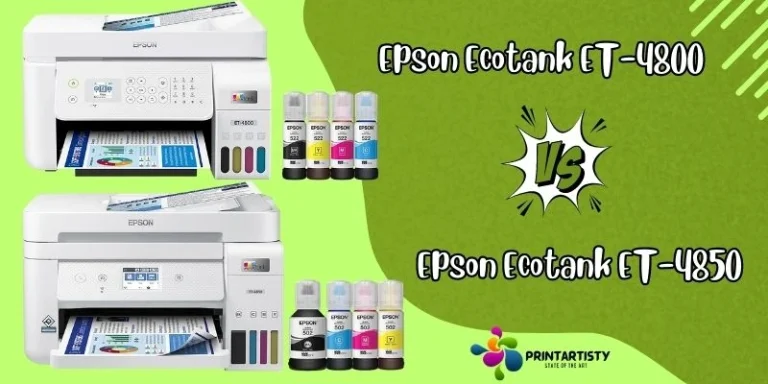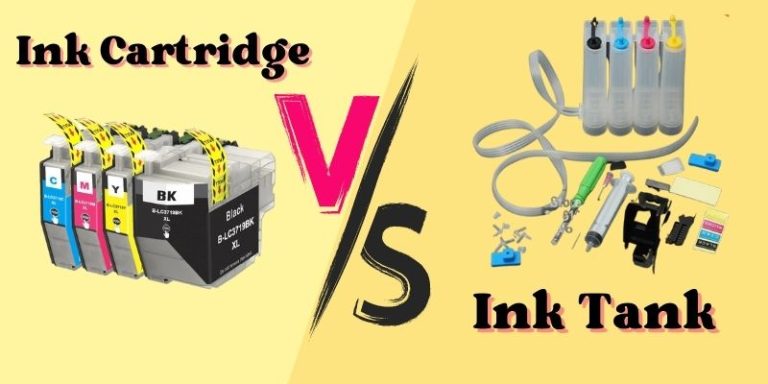Pigment Ink Vs Sublimation Ink | Main Differences
Sublimation ink and pigment ink both are used for printing purposes but despite being printing inks, they have significant differences including the usage of heat transfer papers, utilizing printers, printing substrates, and much more. New crafters might be confused and searching for the pigment ink vs sublimation ink.
So to highlight the key points and main differences, we’re here to provide you with a comprehensive detail of these inks in terms of usage, quality, application, price, compatibility, and other essential factors.

Pigment Ink Vs Sublimation Ink- Similarities and Differences
The main difference between sublimation ink and pigment ink is that sublimation completely binds with the substrate or fabric and becomes a part of them. In contrast, pigment ink forms a layer on the substrate due to tiny solid suspension particles present in the ink.
Pigment ink comes in a solid form of particles that are used to print scrapbooks, magazines, and especially to print high-quality photos on photo paper. Also, you can print t-shirts too. On the other hand, sublimation ink cannot be used for photo printing to produce magazines and photos. But, both are durable and vibrant.
Also, pigment ink is not ideal for, mugs, and plastic substrates. Although sublimation ink is suitable for polymer-coated substrates including mugs, tumblers, acrylic, glass, etc.
How Does Sublimation Ink Work?

Sublimation ink printing completely infuses the substrates when it is exposed to the heat press. It turns from a solid state to a direct gaseous state by skipping the liquid phase and becoming water-resistant.
Sublimation ink is mainly used to print fabrics, leather bags, acrylic, and other substrates. Sublimation ink is made from synthetic compounds extracted from organic compounds by a chemical composition in the laboratory. These synthetic compounds like disperse dyes are highly soluble in water and are compatible to print synthetic or man-made fibers like polymer, ceramics, plastic, and polyester fabric.
A sublimation paper is printed using a dedicated sublimation printer with sublimation ink. Secondly, the sublimation paper is placed over the substrate and heated at a high temperature between 350 to 400F, when the sublimation ink is heated the ink turns into a gaseous state and penetrated the substrate.
The fact is polyester or polymer-coated substrates start to melt at a high temperature and open pores while the sublimation ink makes a place in the fabric.
How Does Pigment Ink Work?
Pigment ink sits on the top of the paper or fabric due to the present larger solid particles present in the ink. Whenever you print using pigment ink, it won’t soak completely in the substrate. Pigment ink comes in the solid suspension form that creates a layer when we expose the printed paper to the heat press.
Pigment ink is composed of either organic or inorganic compounds depending upon the specific type and manufacturer.
Pigment ink is popular when it comes to artists printing fine art prints to last for decades. It is typically used by photographers and utilized for the printing of a variety of media including art papers, canvas, packaging, label printing, and printing stickers.
The pigment ink is durable enough that withstand the UV-rays, and other outdoor conditions due to its nature which is nearly insoluble in water. Also, the pigment ink is waterproof too and used to print outdoor decals and vinyl stickers. In addition, it can produce rich texts on scrapbooks, print on cardstock, and produce fine art prints.
While pigment ink doesn’t require a poly-coated surface to print. it can be used on cotton fabric and polyester too but is not the durable as the sublimation is on the fabric. Because the suitable surfaces for pigment ink are books and photos and other paper-oriented work
While for fabric printing, the pigment ink is printed on heat transfer paper, and later on, it can be transferred to the fabric using a heat press also can make tote bags, and custom designs.
Check more comparisons here DTF vs Sublimation
Sublimation Ink vs Pigment ink- In-depth Comparison

1- Compatibility With Paper
The sublimation ink is only compatible with the sublimation paper because it requires a poly-coated surface and sublimation paper comes with polymer-coating that holds the sublimation ink.
The pigment ink is generally printed on heat transfer paper to print on fabric and glossy paper for printing photos. Also, pigment ink is compatible with matte paper to print out fine art prints.
2- Usage Of Printers
Sublimation ink printing requires a dedicated sublimation printer that is compatible with sublimation ink. Not all inkjet printers can do the sublimation but a specific line of piezo printhead printers can be used for sublimation.
You can check what kind of printers can be used for sublimation. Most commonly, Epson sublimation printers are used for sublimation.
Besides, pigment ink doesn’t require a dedicated printer for printing. You can use a high-quality photo inkjet printer with pigment ink.
3- Required Materials And Color
Sublimation requires 100% polyester or a minimum of 60% poly-blended fabric in order to retain the sublimation ink including white color or lighter shade, In addition, you will need additional polymer coating to print hard substrates. Other than material requirements, sublimation is not suitable for black color polyester. To sublimate dark colors, you need to follow a couple of more steps that are not recommended to a beginner because it involves bleaching the shirt.
More Comparisons check DTG vs sublimation
When it comes to pigment ink, you can use it for any color and fabric. Whether you are using cotton, or a combination of fabric materials, the results will be mediocre every time on any apparel but are not suitable for hard substrates. Although pigment is also not suitable for textiles.
4- Price
Sublimation ink is eco-friendly and high quality but is more expensive than pigment ink. Along with that, it produces high-quality fabric printing which is why sublimation has more value than pigment ink.
Sublimation Ink Pros
Sublimation Ink Cons
Also, you can check if you can use sublimation ink for regular printing.
Pigment Ink Pros
Pigment Ink Cons
Sublimation Ink Vs Pigment Ink Which Is Better
Well, this depends upon your printing business. If your business is specifically related to fabrics then sublimation ink is the best and most durable option out there also for ceramics. And for printing photos and magazines or for high-quality art prints, pigment ink will last for years in museums. Also, pigment ink is better for art and cardstock printing.
Frequently Asked Questions (FAQs)
Can I use pigment ink for sublimation?
No, you cannot use pigment ink for sublimation. As sublimation is the name of binding the ink with the fabric or substrate. Even if you print on sublimation paper using pigment ink but you won’t be able to transfer the ink onto the substrate. Because pigment ink has solid particles that will lay down over the surface thus creating a layer over the top. Therefore, it will create a mess nothing more than that.
Check More here HTV vs sublimation
Does Epson EcoTank use pigment ink?
Some of the Epson Ecotank inkjet printers use pigment ink but you need to check whether it can use the pigment ink or not. For confirmation, you can visit their website to get the exact information for your product.
Final words
Sublimation inks and pigment inks are created for completely different purposes. Sublimation ink is specifically made for sublimation printing and is used to print out the design on polyester fabrics. Pigment inks are made for coloring paper, photo papers, books, etc. choosing the right one depends on your needs. However, it is essential to know about the similarities, differences, and uses to make the right decision.






